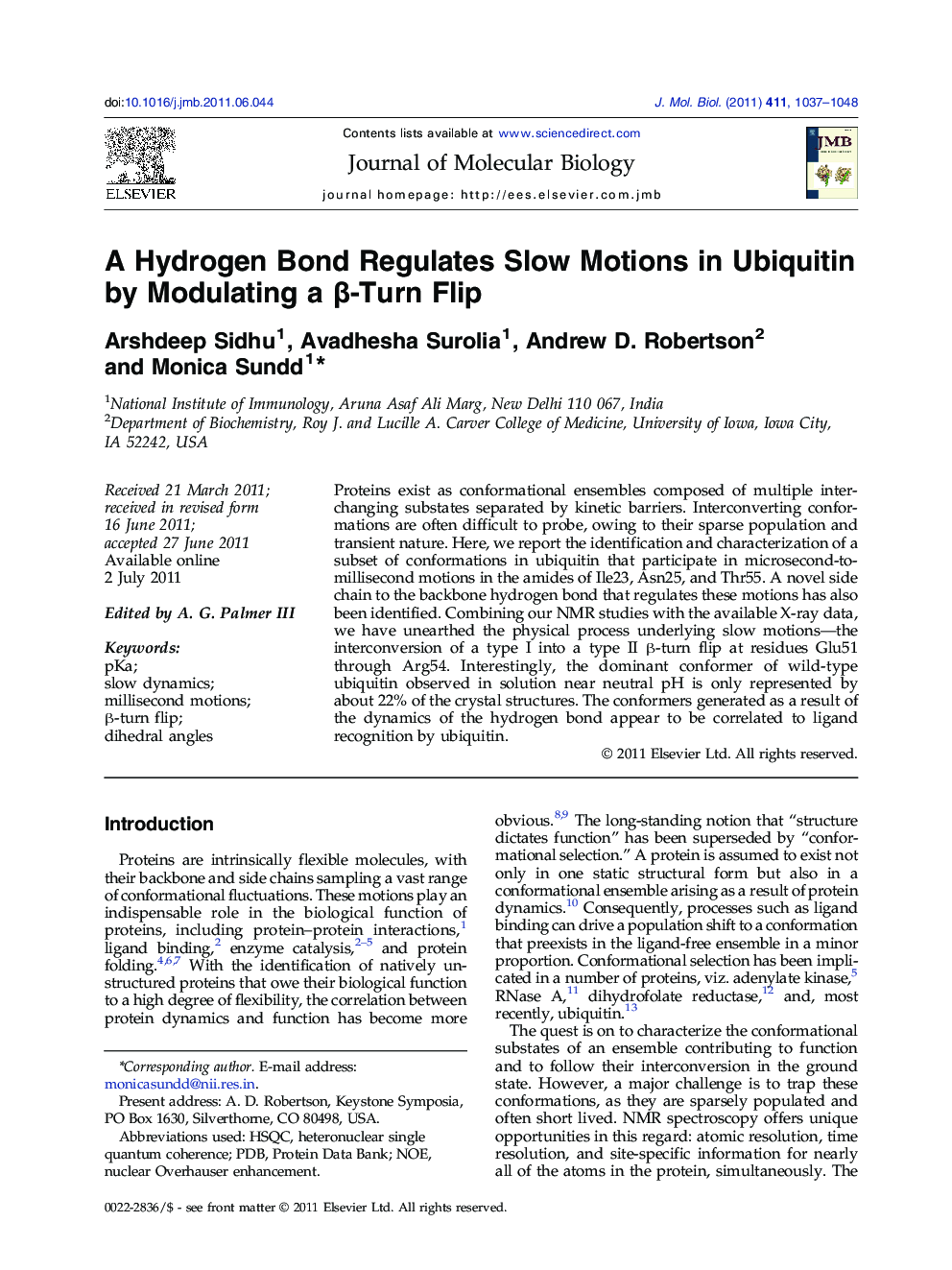| Article ID | Journal | Published Year | Pages | File Type |
|---|---|---|---|---|
| 2185039 | Journal of Molecular Biology | 2011 | 12 Pages |
Proteins exist as conformational ensembles composed of multiple interchanging substates separated by kinetic barriers. Interconverting conformations are often difficult to probe, owing to their sparse population and transient nature. Here, we report the identification and characterization of a subset of conformations in ubiquitin that participate in microsecond-to-millisecond motions in the amides of Ile23, Asn25, and Thr55. A novel side chain to the backbone hydrogen bond that regulates these motions has also been identified. Combining our NMR studies with the available X-ray data, we have unearthed the physical process underlying slow motions—the interconversion of a type I into a type II β-turn flip at residues Glu51 through Arg54. Interestingly, the dominant conformer of wild-type ubiquitin observed in solution near neutral pH is only represented by about 22% of the crystal structures. The conformers generated as a result of the dynamics of the hydrogen bond appear to be correlated to ligand recognition by ubiquitin.
Graphical AbstractFigure optionsDownload full-size imageDownload high-quality image (136 K)Download as PowerPoint slideResearch Highlights► Slow dynamics were identified on the surface of ubiquitin a long time ago. ► The molecular basis for these motions has remained a mystery. ► We show that a hydrogen bond regulates these motions by modulating a β-turn flip. ► Approximately 22% of the crystal structures display this hydrogen bond. ► The conformers generated might have relevance in ligand recognition.
